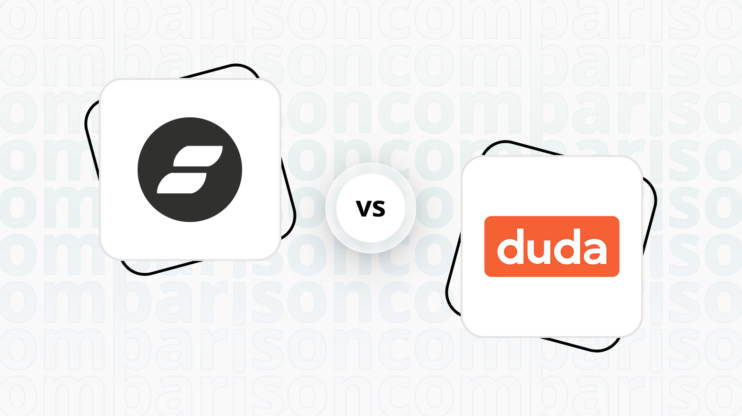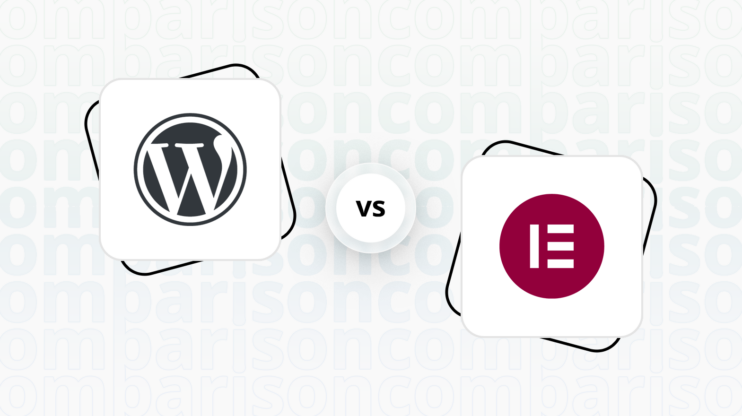Final verdict
Squarespace and Unbounce cater to different niches within the website building and online marketing landscapes, each excelling in its own right.
-
Squarespace (Overall Grade: 7.9/10)
is a versatile website builder known for its sleek design templates, comprehensive ecommerce solutions, and user-friendly interface. It’s ideal for businesses, creatives, and individuals looking to establish a professional online presence with minimal fuss. Squarespace’s strengths lie in its design capabilities, ease of use, and robust ecommerce features, making it a solid choice for users seeking an all-in-one platform for building and managing websites. -
Unbounce (Overall Grade: 6.4/10)
, on the other hand, specializes in creating high-converting landing pages, popups, and sticky bars. It shines with its focus on optimizing conversion rates, offering a suite of tools designed to maximize marketing efforts. While not as versatile as Squarespace in terms of website building, Unbounce is the go-to for marketers and businesses focused on lead generation and conversion optimization.

|

|
|
|---|---|---|
|
Design functionalities & templates |
8.0 |
7.8 |
|
Ease of use |
8.3 |
8.2 |
|
Ecommerce |
8.2 |
4.8 |
|
Website Editors |
8.3 |
7.5 |
|
Product testing options |
7.4 |
6.6 |
|
Price |
8.4 |
7.0 |
|
Hosting quality |
7.6 |
3.9 |
|
Website speed optimization |
6.7 |
5.6 |
|
Plugins and integrations |
6.8 |
6.8 |
|
Marketing features |
8.1 |
7.4 |
|
Customer support |
7.8 |
7.7 |
|
Security |
8.8 |
8.4 |
|
AI capabilities |
7.5 |
7.5 |
|
User Management |
7.4 |
7.2 |
| Overall |
7.9 |
6.4 |
Best for ecommerce
 8.2
8.2
 4.8
4.8
Verdict
: For businesses focused on ecommerce, Squarespace offers a robust platform with a wide array of features, making it the superior choice over Unbounce, which excels in landing page optimization rather than full-scale ecommerce.
-
Squarespace
: With its comprehensive set of ecommerce tools, including secure payment options, SEO optimization, and a variety of templates, Squarespace stands out as a powerful option for creating and managing online stores. -
Unbounce
: Primarily a landing page builder, Unbounce is best suited for campaigns aimed at conversion optimization. While it can integrate with ecommerce platforms, it lacks the native features necessary for managing a complete ecommerce site.
Best for informational & business websites
 8.4
8.4
 5.9
5.9
Verdict
: Squarespace is the superior choice for informational and business websites, offering a more comprehensive set of features tailored to creating professional and visually appealing sites.
-
Squarespace
: With a score of 8.4, Squarespace shines for informational and business websites, thanks to its wide range of design templates, ease of use, and robust hosting and security features. It’s designed to cater to users seeking a blend of aesthetics, functionality, and reliability for their website. -
Unbounce
: Scoring 5.9, Unbounce is primarily focused on landing pages and conversion optimization, which may not fully meet the needs of informational and business websites. While it offers a user-friendly platform and strong marketing integrations, it lacks the broader design and content management capabilities of Squarespace.
Detailed comparison
Design functionalities & templates
Design FunctionalitiesRepresents how well each platform allows for creative design and customization of websites.Score Components:
- Template Variety (30%): Range and quality of design templates.
- Customization (30%): Flexibility and options for design alterations.
- User Interface (20%): Ease and intuitiveness of the design process.
- Responsiveness (10%): Adaptability to different devices and screen sizes.
- Innovation (10%): Unique design features and tools.
 8.0
8.0
 7.8
7.8
🏆
Winner: Squarespace.
Squarespace slightly edges out Unbounce in terms of design functionalities and templates, offering a wider variety of templates and more creative design possibilities.
Squarespace boasts an impressive variety of website templates, offering over 120 pre-designed options to choose from. These templates cater to a wide range of needs and industries, from creative portfolios and sleek online stores to professional business websites and personal blogs.
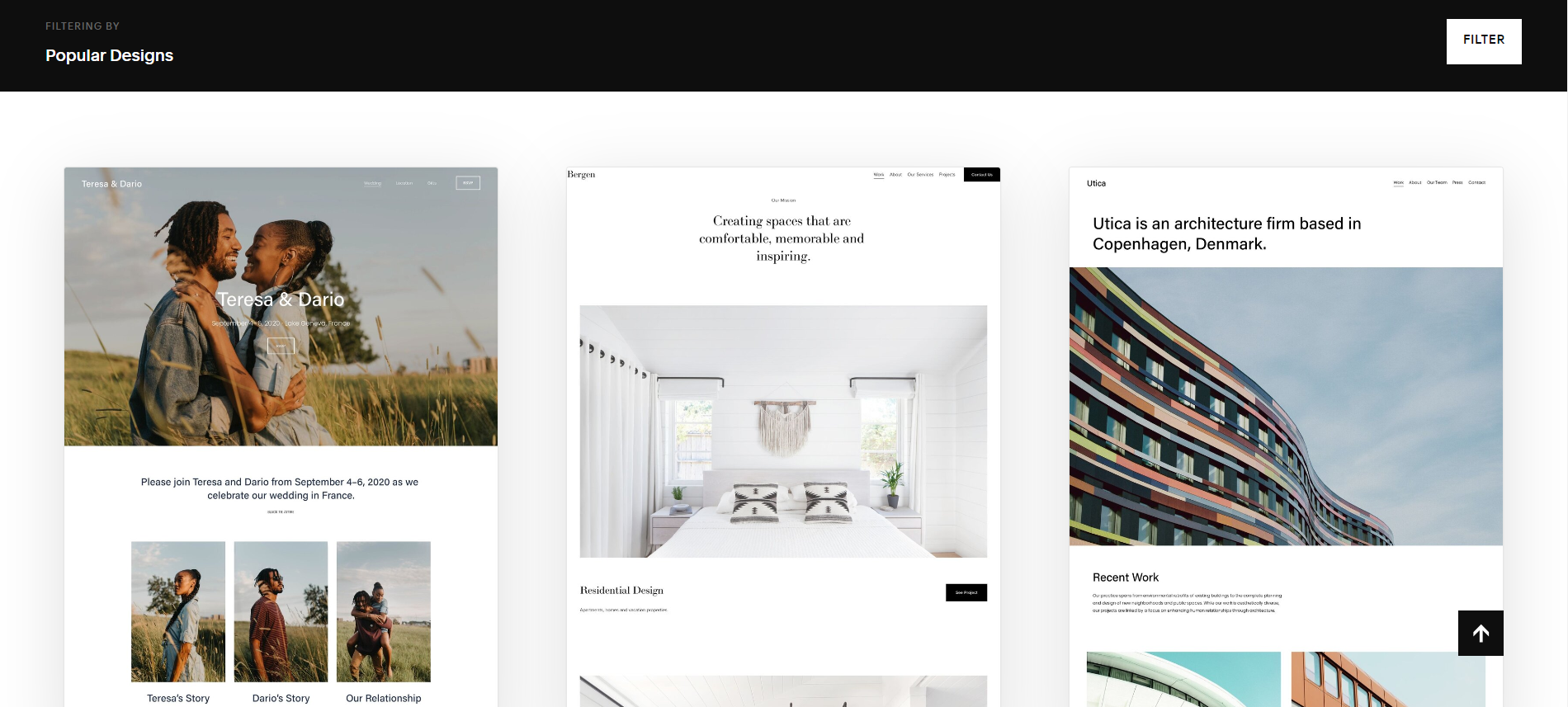

On the other hand, Unbounce provides a gallery of over 100 high-converting templates for landing pages, popups, and sticky bars. These templates are designed with conversion in mind, incorporating knowledge and insights gained from Unbounce’s experience in optimizing landing pages.
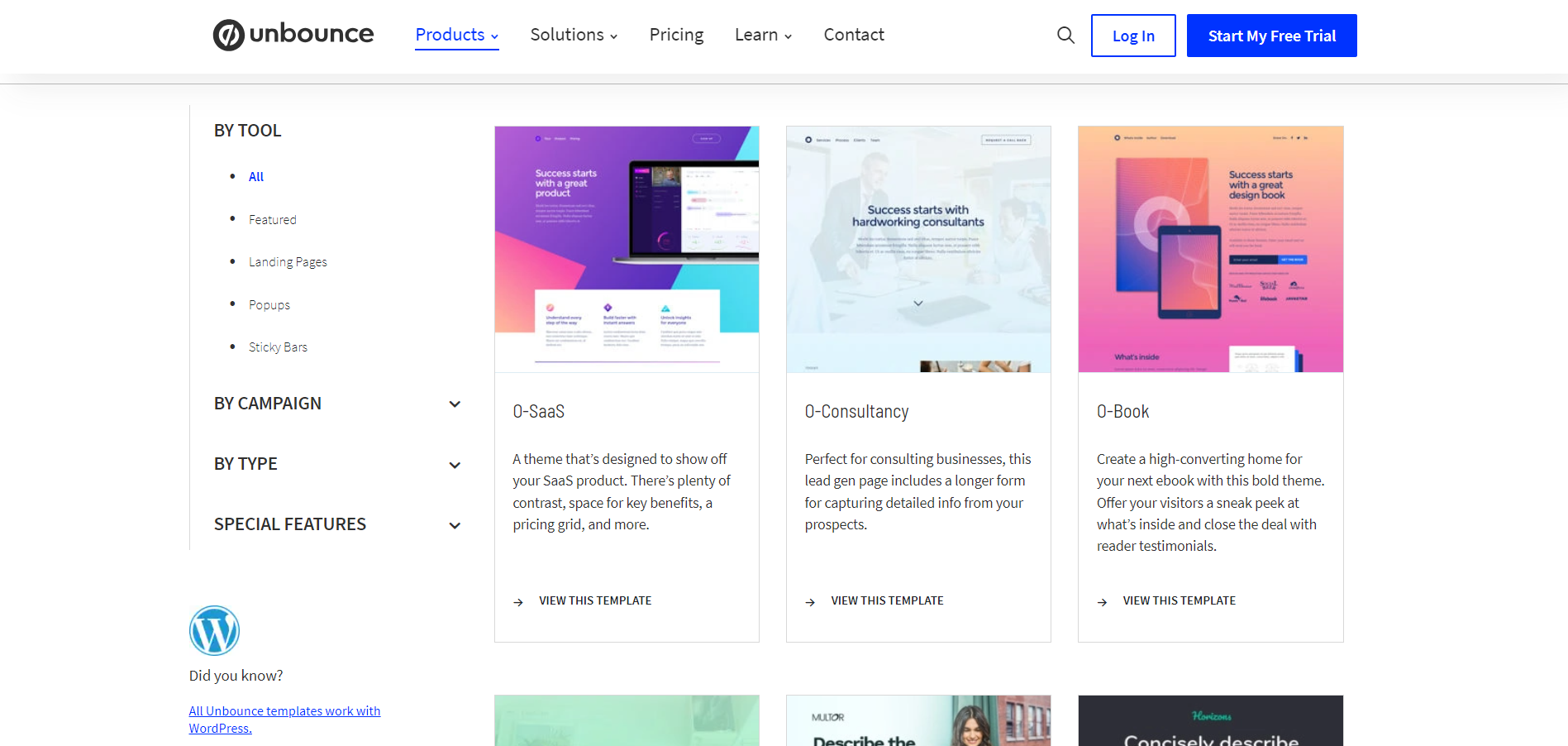
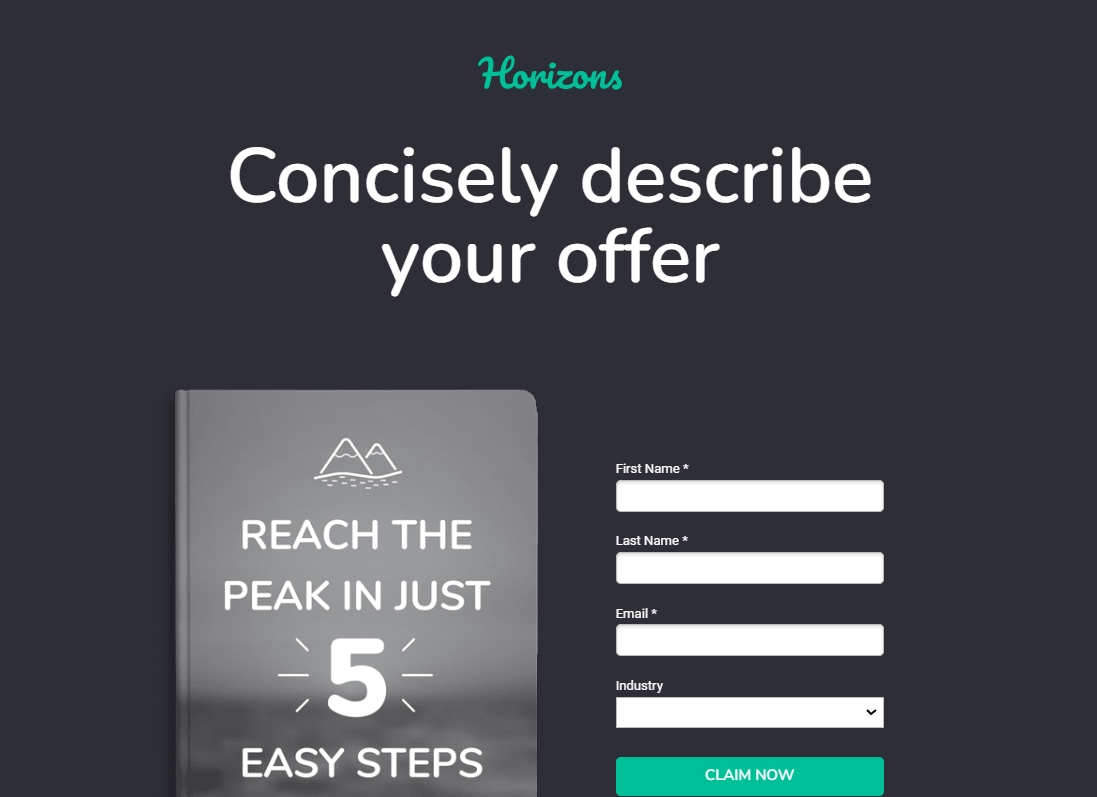
Get a head start on website creation with AI
Create a custom website tailored to your business needs 10X faster with 10Web AI Website Builder!
Ease of use
Ease of useReflects the platform’s overall user-friendliness.Score
Components:
- Learning curve (40%): Quickness and ease of getting started.
- Interface design (30%): Simplicity and intuitiveness of layout.
- User guidance (20%): Quality of tutorials and support.
- Flexibility (10%): Adaptability to various user skills.
 8.3
8.3
 8.2
8.2
🏆 Winner: Squarespace
. With a score of 8.3, Squarespace edges out Unbounce, which scored 8.2. Squarespace is known for its user-friendly interface and straightforward navigation, making it a great choice for those seeking a hassle-free website creation experience. Unbounce, on the other hand, is highly praised for its intuitive drag-and-drop builder and a wide selection of templates, making it easy for users to design and customize landing pages. However, it has been critiqued for its pricing and limited template selection compared to competitors.
Learning Resources
🏆 Winner: Tie
. Both Squarespace and Unbounce offer extensive learning resources for their users. Squarespace provides a comprehensive Help Center, clear video tutorials, live webinars, an informative blog, and an active community forum. Unbounce offers a rich collection of learning resources designed to help users maximize their platform’s capabilities, including a comprehensive Help Centre, the Unprompted Podcast for marketing insights, and a Video Library for visual learning.
For ecommerce
EcommerceMeasures the platform’s effectiveness in supporting online business activities.Score Components:
- Ecommerce themes and templates (20%): Variety and design of templates.
- Product management (25%): Ease of managing and organizing products.
- Payment options (25%): Variety and convenience of payment methods.
- Ecommerce features (20%): Features for managing an ecommerce store.
- Integration (10%): Compatibility with external e-commerce tools and services.
 8.2
8.2
 4.8
4.8
Squarespace and Unbounce cater to different ecommerce needs. Squarespace is a comprehensive ecommerce solution, offering a range of features from secure payment processing to SEO optimization. Unbounce, on the other hand, is primarily a landing page builder with limited ecommerce capabilities, focusing on conversion optimization.

|

|
|
|---|---|---|
|
Ecommerce themes and templates |
7.5 |
2.0 |
|
Product page customization |
7.0 |
3.0 |
|
Payment processing and commissions |
7.8 |
6.5 |
|
POS capabilities |
6.5 |
0.0 |
|
Payment gateways |
7.5 |
7.0 |
|
Product numbers |
6.8 |
0.0 |
|
Additional ecommerce features |
7.2 |
4.5 |
Squarespace ecommerce features:
- Intuitive interface
- Secure payment processing
- Built-in marketing tools
- SEO optimization
- Website analytics
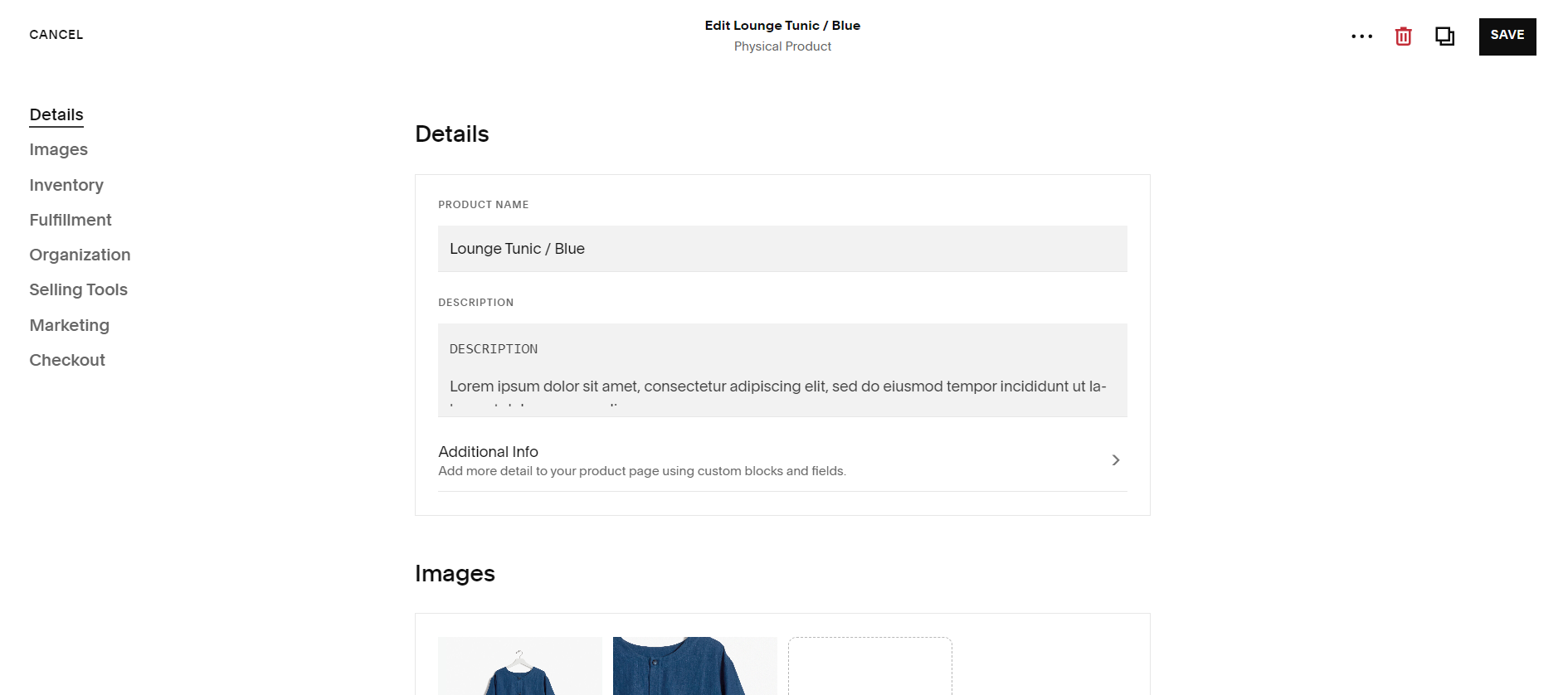
Unbounce ecommerce features:
- Shopify, Ecwid, or other ecommerce solutions integration
Ecommerce themes & templates
Squarespace provides a diverse selection of around 50 ecommerce templates, catering to various industries like fashion, beauty, home goods, and technology. These templates range from clean and minimalist to bold and colorful, accommodating different brand aesthetics and product types. Offering unique layout elements such as product sliders and featured collections, these templates enhance visual interest and engagement. Unbounce, on the other hand, primarily focuses on building landing pages and does not have ecommerce specific templates.
Product page customization
Squarespace offers options for layout, design, and interactive elements on product pages. Choose templates, customize colors, fonts, and content. Enhance engagement with features like customizable buttons, wishlists, comparisons, reviews, and related products. Advanced options include custom code injection and third-party app integrations. Limitations include fixed core page structure and the need for technical expertise. Free templates have fewer customization options than premium ones. Unbounce, however, does not have the possibility to create or customize product pages, it’s primarily focused on building landing pages, with the possibility to integrate with ecommerce platforms such as Shopify or Ecwid.
Payment processing
Squarespace provides flexible payment processing for online stores with integrated gateways like Stripe and PayPal. External gateways can be set up for specific needs. Transaction fees may apply depending on the plan and payment method. Security measures include PCI compliance and fraud prevention. Additional features include payment links, support for subscriptions, and the ability to accept international payments in various currencies. Unbounce supports payment processing through an integration with Stripe, allowing users to create landing pages that can handle transactions directly, with Stripe facilitating global payments in over 135 currencies. Unbounce itself does not mention charging additional fees for transactions, implying that fees are subject to Stripe’s own pricing structure. The platform is focused on optimizing online conversions and does not offer Point of Sale (POS) capabilities, as its core features are designed for enhancing digital experiences such as landing pages and pop-ups.
Website Editors
Website EditorsEvaluates the platforms’ website building and editing capabilities.Score Components:
- Customization tools (40%): Range and power of editing features.
- Editor usability (30%): User experience within the editor.
- Design flexibility (20%): Freedom in layout and design changes.
- Update and maintenance ease (10%): Simplicity of updating and maintaining the site.
 8.3
8.3
 7.5
7.5
🏆
Winner: Squarespace
. Squarespace, with a score of 8.3, offers a user-friendly editor that allows easy drag-and-drop website creation without coding. With visually appealing templates and customization options, it caters to beginners and pros alike. The real-time editing experience ensures instant previews. Prioritizing content, it’s mobile-responsive and offers functional features like forms, social media integration, and online stores. Squarespace seamlessly integrates with tools for extended capabilities.
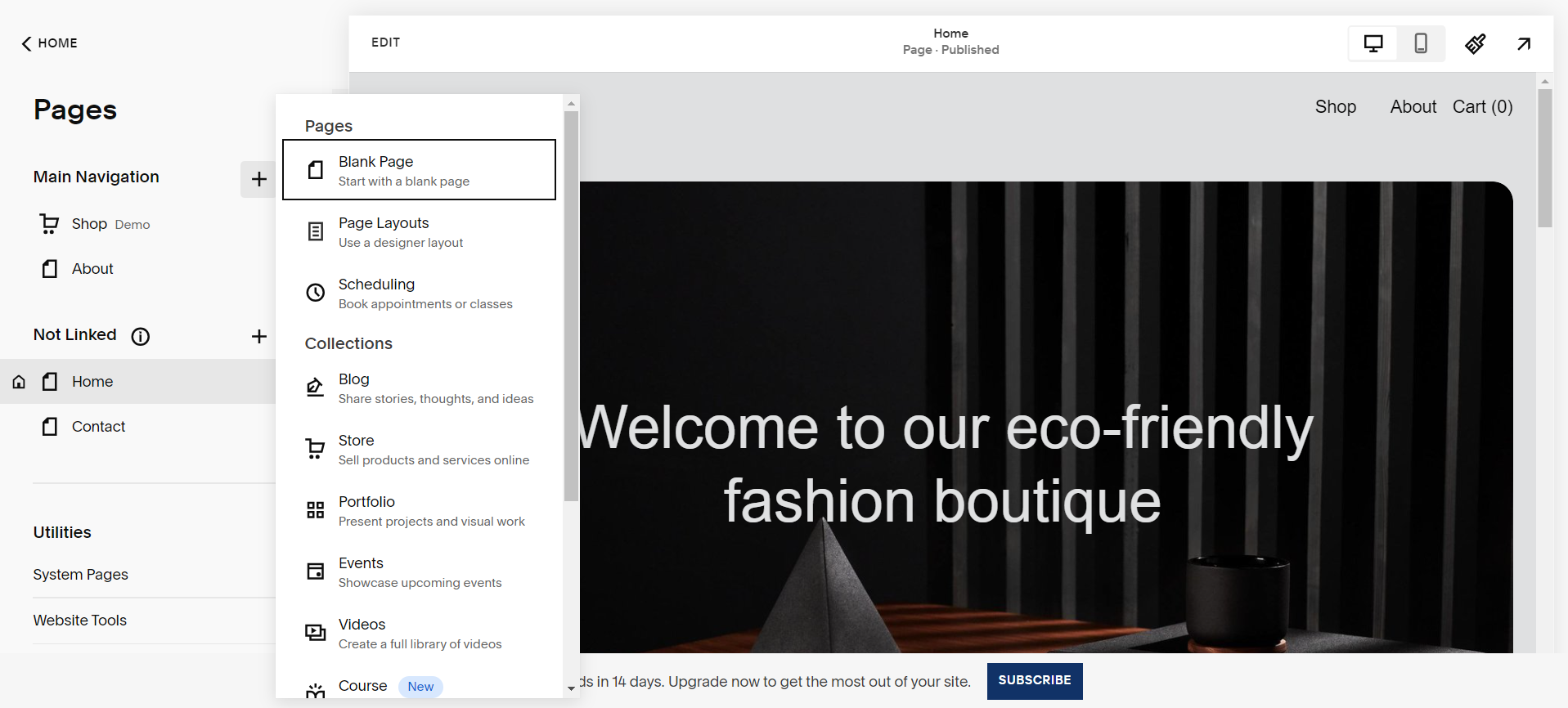
Unbounce’s editor, scoring 7.5, is equipped with a user-friendly drag-and-drop interface, enabling users to design and customize landing pages without the need for coding skills. It offers a variety of templates, widgets, and elements such as forms and buttons, alongside options for integrating custom HTML, CSS, and JavaScript for advanced customization. The platform supports responsive design, ensuring landing pages perform well across all devices, and includes features for A/B testing and dynamic text replacement to optimize conversion rates. Additionally, it allows for the integration of various marketing tools and platforms, enhancing the effectiveness of digital marketing campaigns.
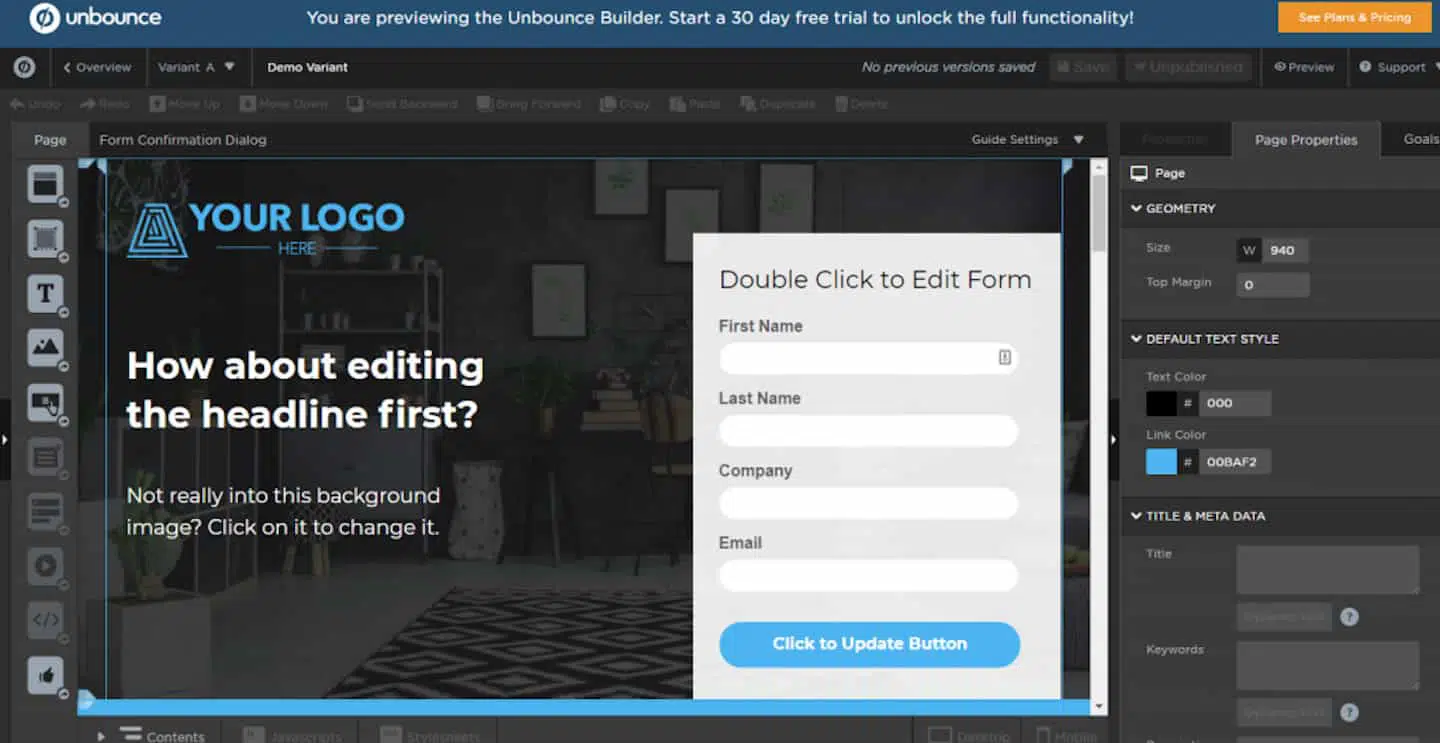
Mobile editor/app
 8.5
8.5
 0
0
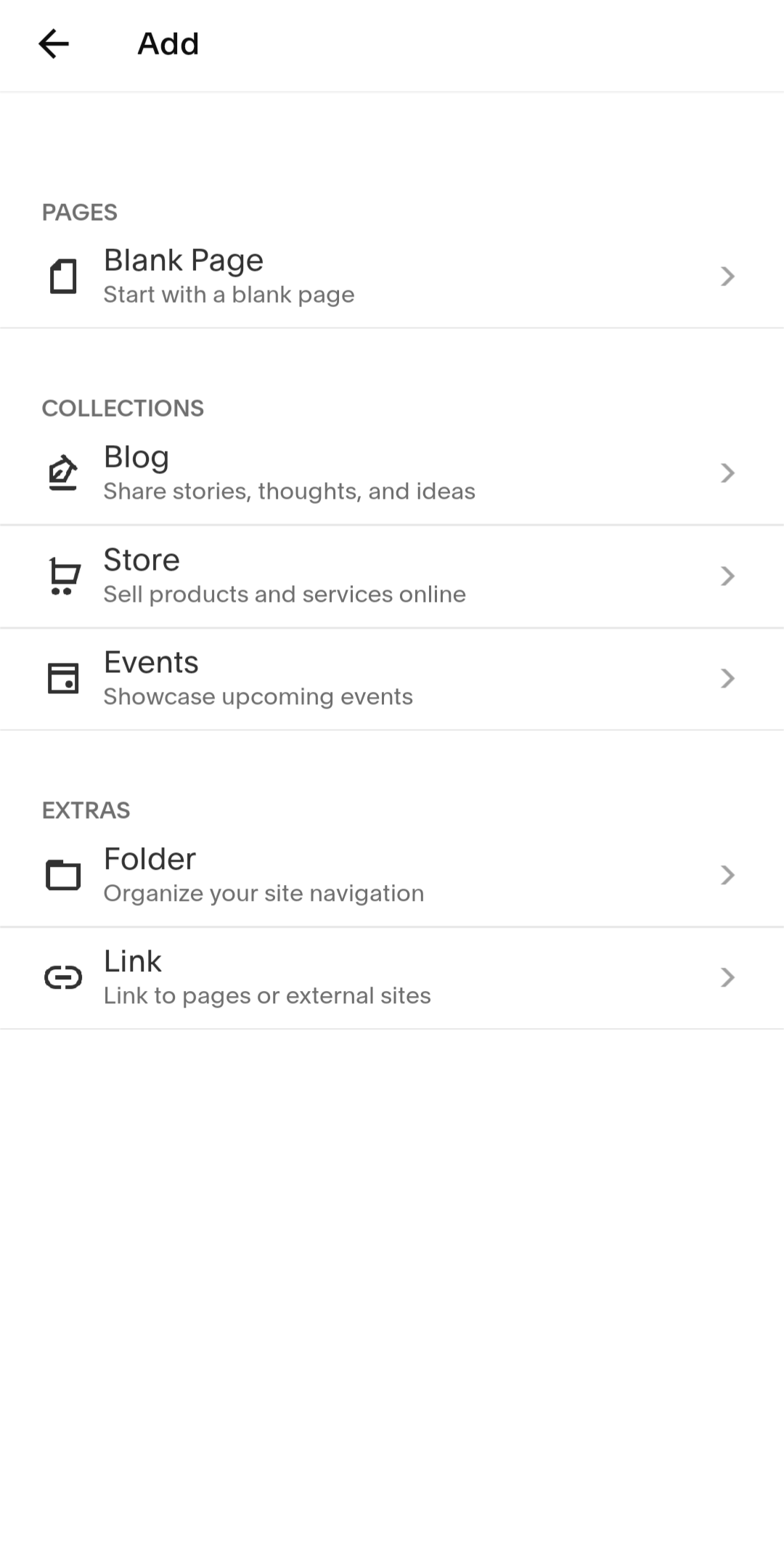
🏆
Winner: Squarespace
. Squarespace offers a mobile app that allows users to manage their website on the go. The app enables content editing, website analytics, online store management, and social media scheduling. However, it’s worth noting that complex tasks such as advanced design customization or creating new page layouts require access to the desktop editor, as the app doesn’t offer the full range of functionalities available on desktop.
On the other hand, Unbounce does not have a dedicated mobile editor app. This means that all editing and management tasks must be performed on a desktop, which may not be as convenient for users who prefer to work on their mobile devices. Therefore, Squarespace is the clear winner in this category due to its mobile app capabilities.
Product testing options
Product Testing OptionsAssesses the options for trying out platform features before commitment.Score Components:
- Trial quality (40%): Extent and usefulness of the trial or free version.
- Feature accessibility (30%): How many features are available to test.
- Trial duration (20%): Length of the trial period.
- Ease of transition (10%): Smoothness of moving from trial to paid plans.
 7.4
7.4
 6.6
6.6
Overall Result
:
Squarespace wins
. Squarespace scores 7.4, while Unbounce scores 6.6 in product testing options. Both Squarespace and Unbounce offer a 14-day free trial, but Squarespace provides a full refund within 14 days if the annual subscription is canceled, while Unbounce does not offer a money-back guarantee. Squarespace allows testing of most premium features, except for custom code, premium integrations, and removal of Squarespace branding. Unbounce allows testing of premium features during the trial, but requires users to enter their billing information.

|

|
|
|---|---|---|
|
Free Plan |
No | No |
|
Trial Duration |
14 days | 14 days |
|
Testing Premium Features |
Most, except for custom code, premium integrations and removal of Squarespace branding | Yes, but requires billing information |
|
Money Back Guarantee |
Full refund within 14 days |
No |
Price
PriceLooks at the cost-effectiveness and value for money of each platform.Score Components:
- Plan value (40%): What each pricing tier offers.
- Transparency and clarity (30%): Clearness of pricing structures.
- Flexibility of plans (20%): Range of options to suit different budgets.
- Hidden costs (10%): Additional expenses not included in the plan.
 8.4
8.4
 7.0
7.0
Squarespace offers more affordable pricing plans compared to Unbounce, but Unbounce provides more specialized features for landing page optimization and conversion rate enhancement.

|

|
|
|---|---|---|
|
$10-$15 |
Personal ($12/month): Build a basic website with limited features for personal use. Access to basic templates, mobile-friendly design, and some social media integrations. Value for price: 6.0 |
No offering at this amount. |
|
$15-$20 |
Business ($16/month): Upgrade features with custom domain, SEO tools, marketing tools like email campaigns, and analytics. Value for price: 7.5 |
No offering at this amount. |
|
$20-$30 |
Commerce ($26/month): Perfect for online stores with built-in eCommerce functionality (unlimited products), secure checkout, inventory management, and marketing tools. Value for price: 8.5 |
No offering at this amount. |
|
$30-$40 |
Advanced Commerce ($40/month): Cater to high-volume stores with advanced eCommerce features like abandoned cart recovery, product subscriptions, gift cards, and real-time shipping quotes. Value for price: 9.0 |
No offering at this amount. |
|
$90-$100 |
No offering at this amount. |
Build ($99.00/month): Provides tools for building and launching high-converting landing pages, unlimited pages, popups, sticky bars, a form builder, free hosting, AI copywriting, custom scripts, 1,000+ integrations, support for 1 root domain with unlimited subdomains, catering up to 20,000 monthly unique visitors. Value for price: 6.5 |
|
$100-$200 |
No offering at this amount. |
Experiment ($149.00/month): Includes everything in the Build plan plus unlimited A/B tests, advanced reporting, dynamic text replacement, support for 2 root domains, and up to 30,000 monthly unique visitors. Value for price: 7.5 |
|
$200-$300 |
No offering at this amount. |
Optimize ($249.00/month): Adds to the Experiment plan with AI traffic optimization, visitor behavior insights, advanced targeting, supports 3 root domains, and caters to up to 50,000 monthly unique visitors. Value for price: 8.0 |
|
$600+ |
No offering at this amount. |
Concierge (Starting at $649/month): Offers everything in the Optimize plan plus dedicated support, implementation services, client and user management, flexible add-on plans for scaling, starting with 5 root domains and 100,000 monthly unique visitors, with options to scale. Value for price: 8.5 |
location. As a result in rare cases the prices displayed here can differ from the ones you see on their
websites.
Hosting quality
Hosting
qualityExamines the reliability and performance of the hosting solutions.Score Components:
- Uptime (40%): Consistency and reliability of website availability.
- Speed (30%): Loading times and performance.
- Bandwidth and storage (20%): Sufficiency of resources provided.
- Data centers (10%): Quality and distribution of hosting infrastructure.
 7.6
7.6
 3.9
3.9
Winner: Squarespace
. Squarespace offers proprietary cloud-based hosting with a 99.9% uptime guarantee and data centers across North America, Europe, and Asia. Unbounce also offers hosting, but it does not specify the type of hosting it provides or the locations of its data centers. It has an uptime of 99.96% but does not offer an uptime guarantee.

|

|
|
|---|---|---|
|
Do they offer hosting? |
Yes, included in all paid plans |
Yes, but the platform does not specify the type of hosting it provides |
|
Data Centers: |
Squarespace’s data centers are strategically scattered across North America, Europe, and Asia |
Unbounce does not disclose the locations of its data centers |
|
Type of hosting: |
Proprietary cloud-based hosting |
The platform does not specify the type of hosting it provides |
|
Uptime: |
99.9% |
99.96% |
|
Uptime Guarantee: |
Yes |
No |
Website Speed Optimization
Website Speed OptimizationEvaluates optimization of website loading timesScore Components:
- PageSpeed Score (30%): Google’s score indicating performance optimization.
- Loading Time (30%): The average time until a website is fully interactive.
- Mobile Optimization (15%): Optimization effectiveness for mobile devices.
- Resource Optimization (15%): Optimizing images, scripts, and other heavy resources.
- CDN Usage (10%): Use of CDN to enhance speed across geolocations.
 6.7
6.7
 5.6
5.6
🏆 Winner: Squarespace
Both Squarespace and Unbounce have strategies for website speed optimization, but Squarespace has a more comprehensive approach and provides more information about their performance.

|

|
|
|---|---|---|
|
Focus |
Responsive design, image optimization |
Image optimization, Caching |
|
Performance Tools |
CDN, code minification, lazy loading |
Speed Booster |
|
Key Strategies |
Responsive design, image optimization, CDN, code minification, lazy loading |
Image optimization, Caching, Speed Booster |
|
Load Times |
0.7s to 9.1 s (Average: 2.9s) |
Varies depending on optimization and website complexity |
|
Page Speed Scores Range |
20/100 to 93/100 (Average: 62.7/100) |
Varies depending on optimization and website complexity |
|
Core Web Vitals Improvement |
Emphasis on LCP, FID, CLS improvements |
No information provided |
Squarespace’s approach to website speed optimization includes responsive design, image optimization, use of a content delivery network (CDN), code minification, and lazy loading of images. These strategies help to improve load times and PageSpeed scores, which range from 20/100 to 93/100, with an average of 62.7/100. Load times vary from 0.7s to 9.1s, with an average of 2.9s. Squarespace also places emphasis on improving Core Web Vitals, specifically LCP, FID, and CLS.
Unbounce, on the other hand, focuses on image optimization, caching, and a feature called Speed Booster for website speed optimization. However, Unbounce does not provide specific information about their load times, PageSpeed scores, or Core Web Vitals improvements, stating only that these vary depending on optimization and website complexity.
Get a head start on website creation with AI
Create a custom website tailored to your business needs 10X faster with 10Web AI Website Builder!
Plugins and integrations
Plugins and integrationsMeasures the range and effectiveness of additional plugins and integrations.Score Components:
- Variety of options (40%): Range of available add-ons.
- Integration smoothness (30%): Ease of integrating plugins into the site.
- Quality of plugins (20%): Functionality and reliability of the options.
- Custom integration capabilities (10%): Support for custom or third-party integrations.
 6.8
6.8
 6.8
6.8
🏆 It’s a tie.
Both Squarespace and Unbounce score 6.8 in this category, indicating a similar level of functionality and flexibility in terms of plugins and integrations. Squarespace supports integrations and extensions through custom code injection and third-party tools, while Unbounce offers a wide array of apps and integrations to enhance the functionality of landing pages.
Squarespace’s top integrations cover email marketing with Mailchimp, comprehensive SEO optimization through Yoast SEO and Rank Math, user behavior analytics with Hotjar, and varied payment options with Stripe, PayPal, ShipStation, and Afterpay.
On the other hand, Unbounce’s platform offers a variety of integration options to optimize landing page functionality, including native integrations with marketing tools like Mailchimp and Salesforce, webhooks for custom data handling, and Google services for analytics and ads. Zapier integration allows for seamless connection with over 60+ other tools, enhancing automation and efficiency.
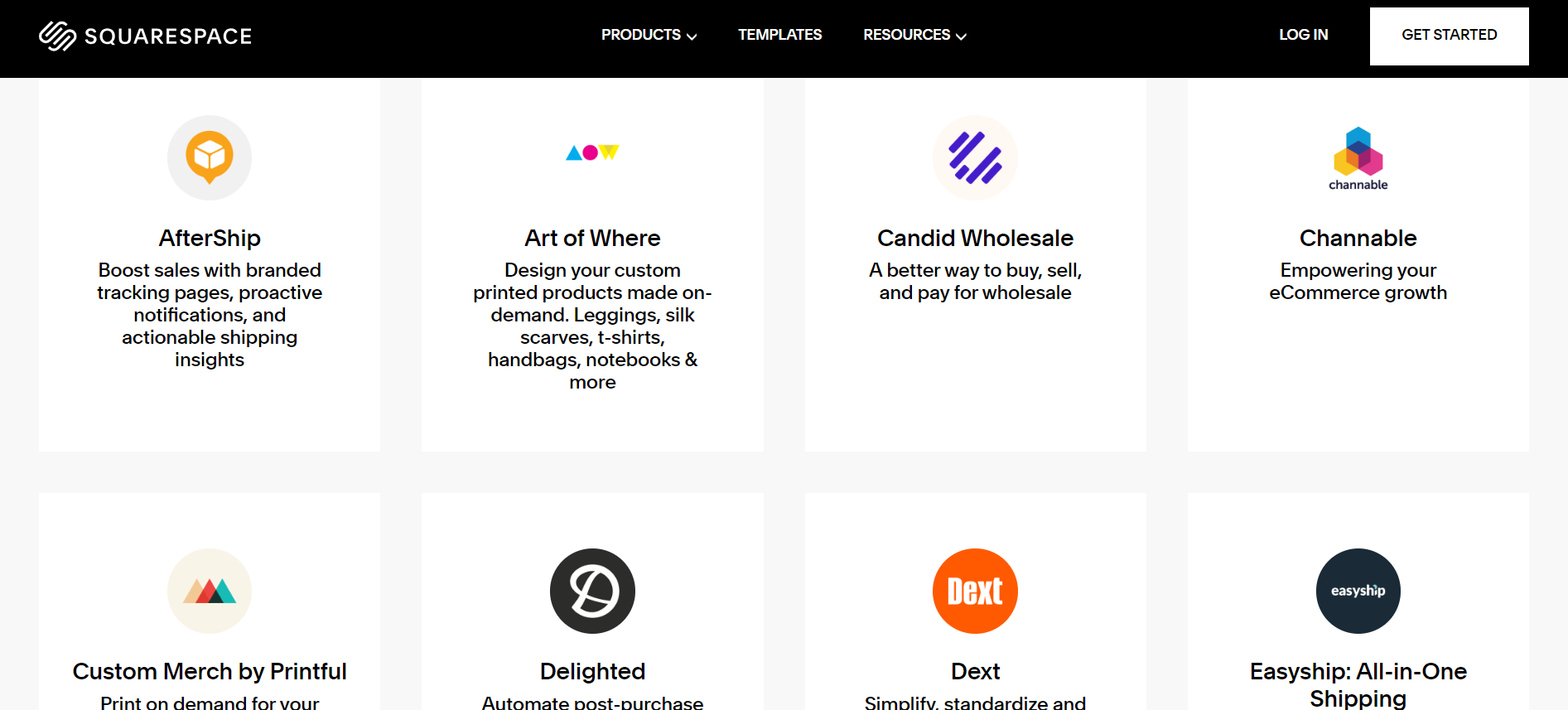

Marketing Features
Design FunctionalitiesRepresents how well each platform allows for creative design and customization of websites.Score Components:
- Template Variety (30%): Range and quality of design templates.
- Customization (30%): Flexibility and options for design alterations.
- User Interface (20%): Ease and intuitiveness of the design process.
- Responsiveness (10%): Adaptability to different devices and screen sizes.
- Innovation (10%): Unique design features and tools.
 8.1
8.1
 7.4
7.4
🏆
Overall Winner: Squarespace
. Squarespace offers a more comprehensive set of marketing tools, including SEO tools, email marketing, blogging, and detailed analytics. Unbounce, while lacking in blogging, excels in social media integration and offers robust tools for ads and promotions.

|

|
|
|---|---|---|
|
SEO Tools |
|
|
|
Email Marketing |
|
✓ (with third-party integrations) |
|
Blogging |
|
✗ |
|
Social Media Integration |
Direct linking and selling on social platforms |
Advanced integration for targeted campaigns |
|
Analytics and Reporting |
Detailed insights into website performance |
Comprehensive insights into user interactions |
|
Ads and Promotions |
Integration with Google Ads |
Robust set of features for ads and promotions |
Customer Support
Customer supportEvaluates the quality and availability of support options.Score Components:
- Response time (40%): Speed of support responses.
- Support quality (30%): Effectiveness and helpfulness of the support.
- Availability (20%): Range of support channels (phone, chat, email).
- Resource richness (10%): Quality of self-help and educational materials.
 7.8
7.8
 7.7
7.7
🏆 Winner: Squarespace
. Squarespace edges out Unbounce in this category with a customer support score of 7.8 compared to Unbounce’s 7.7. Squarespace provides a variety of customer support options, including live chat, email, a community forum, and a comprehensive help center. While live chat and phone support operate on weekdays from 6 AM to 6 PM PST, email support, the community forum, and help center offer 24/7 access.
Unbounce also offers a variety of customer support options, including live chat, email, and phone. Live chat and phone support are available Monday to Friday, from 6 AM to 6 PM PST, while 24/7 support can be accessed through their Help Centre, Community, and Chat Bot.
When it comes to enterprise-level support, both Squarespace and Unbounce offer dedicated support services, including personal account managers and priority support. However, Squarespace’s slightly higher customer support score gives it the edge in this category.
Security
SecurityLooks at the platforms’ security measures and data protection.Score Components:
- Data protection (40%): Safeguards for user and customer data.
- SSL and encryption (30%): Implementation of secure connections.
- Compliance (20%): Adherence to industry security standards.
- Regular updates (10%): Frequency of security updates and patches.
 8.8
8.8
 8.4
8.4
🏆
Winner: Squarespace
. Squarespace’s security measures are comprehensive, including secure server storage, encryption, strict access controls, and compliance with regulations such as GDPR and CCPA. It also has vulnerability scanning and malware detection. For website security, Squarespace uses built-in features, including secure hosting, SSL certificates, vulnerability scanning, malware and spam filters, two-factor authentication, data encryption, and compliance with security regulations like PCI-DSS and GDPR.
Unbounce also prioritizes security, achieving PCI Level 4 Merchant status and adhering to GDPR. It implements robust disaster recovery strategies and undergoes regular external security audits. The platform employs a secure, multi-tenant environment with strict access controls and daily data backups. For website security, Unbounce emphasizes a robust security framework focusing on the protection of user data and compliance with key regulations by employing a defense-oriented architecture and network safety measures. Its systems, designed as stateless, short-lived, and immutable, reside within a private virtual network on AWS, prioritizing the minimization of attack risks and swift recovery processes. With encrypted communications and stringent firewall policies, Unbounce ensures enhanced protection against external threats.
AI Capabilities
AI capabilitiesMeasures the effectiveness of AI-driven features and tools.Score Components:
- Automation efficiency (40%): Impact of AI on streamlining processes.
- Personalization (30%): AI-driven customization for users or customers.
- AI-Assisted design (20%): Role of AI in website design and functionality.
- Data analysis (10%): Use of AI in interpreting user data and analytics.
 7.5
7.5
 7.5
7.5

|

|
|
|---|---|---|
|
Personalized Design |
|
Unbounce’s Smart Builder offers personalized templates and design recommendations |
|
SEO Optimization |
AI-driven recommendations for better search engine visibility |
|
|
Customer Behavior Analysis |
Advanced analytics to understand customer preferences |
|
|
Sales Predictions |
|
|
|
Inventory Management |
AI tools to assist in efficient inventory handling |
|
|
Content Generation |
AI assistance in creating diverse content |
AI-powered tool, Smart Copy, for generating various types of content |
🏆 Winner: Tie
. Both Squarespace and Unbounce have strong AI capabilities, each with a score of 7.5. Squarespace’s AI focuses on enhancing the eCommerce experience and content creation, while Unbounce’s AI is designed to optimize landing page creation and conversion rates.
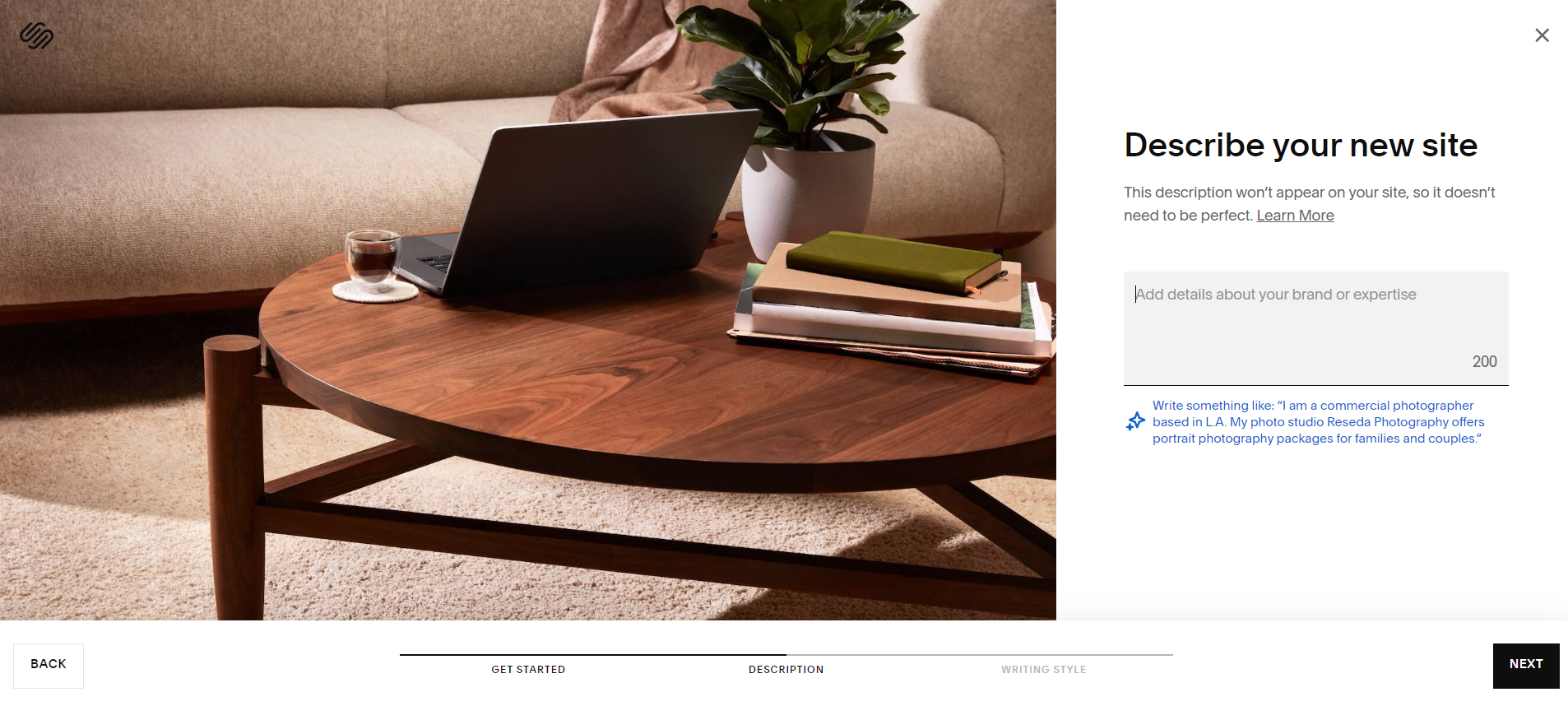
Squarespace’s AI capabilities empower users to create diverse content effortlessly. It generates compelling product descriptions, various website copy, blog posts, social media captions, and email marketing content. The AI, guided by user prompts, offers different tones and styles, facilitates content expansion or simplification, and includes grammar and spell checks for accuracy and professionalism.
Unbounce’s Smart Builder utilizes AI to optimize landing page creation, offering personalized templates, copy and design recommendations. This tool makes building landing pages faster and more efficient, allowing users to connect their marketing tools without the need for coding.
User Management
User ManagementAssesses the platforms’ capabilities in managing user roles, permissions, and accessibility.Score Components:
- Role Customization (40%): Flexibility in creating and defining user roles and
permissions. - Ease of Management (30%): User interface and tools for managing users.
- Access Control (20%): Effectiveness of access control measures for different user
levels. - Scalability (10%): Ability to manage a growing number of users efficiently.
 7.4
7.4
 7.2
7.2
🏆 Winner: Squarespace
. Both Squarespace and Unbounce offer different levels of user management, but Squarespace edges out with a slightly higher score.
- Squarespace’s user management varies by plan. The Personal Plan allows one owner, Business and Commerce Plans permit 2 collaborators with different access levels, and the Enterprise Plan offers unlimited users, each with customizable access privileges.
- Unbounce offers one staff account on its basic plan, with the option to expand up to 15 accounts on the premium plan. It also provides customizable permissions, enabling you to restrict or grant access based on roles such as viewer, author, and administrator.
Squarespace User Roles and Access Levels:
| Role | Description | Access Highlights |
|---|---|---|
| Owner | The primary user who created the website and has full access. | Full site access, including billing, site settings, content editing, and member management. |
| Administrator | Users granted nearly full access to manage the site alongside the Owner. | Access to most areas except for some owner-specific settings like ownership transfer. |
| Content Editor | Users focused on adding and managing site content without full site access. | Can add, edit, and delete content on pages, blog posts, and manage comments. |
| Billing | Users who manage the subscription and billing details. | Access to billing information and the ability to update subscription details. |
| Store Manager | Users who manage the ecommerce aspects of the site. | Can manage inventory, fulfill orders, manage customers, and view sales analytics. |
| Custom | A role defined by the site owner or administrators with specific access. | Customizable access as defined by the Owner or Administrators, can vary widely between sites. |
Unbounce User Roles and Access Levels:
| Role | Description | Access Highlights |
|---|---|---|
| Viewers | Members of your team who want to view and approve pages, popups, or sticky bars before publication. | Can access pages, popups, sticky bars, stats, and leads. Cannot edit/manage pages or access account management, billing details, domains, or add users. |
| Authors | Designers or copywriters invited to edit landing pages. | Can edit, manage, publish/unpublish pages, popups, sticky bars. Have access to viewing leads and stats. Cannot access account management, billing details, domains, or add users. |
| Administrators | Manage the Unbounce account, including billing details. | Can edit, manage, publish/unpublish pages, popups, sticky bars. Can access account management, billing details, domains, and add users. Cannot delete leads or remove other Admins. |
Additional Features

|

|
|
|---|---|---|
|
SSL Certificate |
|
|
|
Custom Domain |
|
|
|
Free Custom Domain Included |
|
|
|
International Domains |
|
|
|
Mobile Responsive |
|
|
|
Page Speed |
|
|
|
Website Builder Mobile App |
|
|
|
Convert a Website To An App |
|
|
|
Website Analytics |
|
|
|
Multilingual Sites |
|
|
|
Multiple Users |
|
|
User Feedback
Squarespace is appreciated for its user-friendly interface and versatile tools, making it a preferred choice for those who aren’t tech-savvy. It offers a range of features like website creation, SEO, online selling, and more, catering to a diverse user base. Customers value its good customer support and visually appealing templates, which help in creating a professional online presence. However, some users have reported issues with domain transfer/setup, limited customization options, and consider the pricing slightly higher. There are also occasional concerns about customer service and technical limitations like template rigidity and missing features.
Unbounce, on the other hand, has received mixed reviews from its users. Many users appreciate its user-friendly, drag-and-drop page builder, which facilitates the quick creation and editing of landing pages without the need for technical expertise. Users find it beneficial for A/B testing, integrating with CRMs, and swiftly turning around marketing content. However, there are notable concerns, particularly with a case of unexpected switch to an annual plan without consent and refusal to refund, indicating potential issues with customer service and billing practices. Additionally, some users mention technical limitations, such as responsiveness issues and the absence of global elements for content updates across multiple pages, which can hinder efficiency.
The making of this blog
We followed a clear, step-by-step process to write and research this article.
FAQ
Which platform is better for creating a professional website, Squarespace or Unbounce?
Can I use Unbounce for ecommerce?
Is Squarespace or Unbounce easier to use for beginners?
Which platform offers better customer support, Squarespace or Unbounce?
How do Squarespace and Unbounce compare in terms of pricing?
Which platform is better for SEO and marketing features?
Can I manage multiple users and roles on both platforms?
Are Squarespace and Unbounce secure platforms for building websites?










